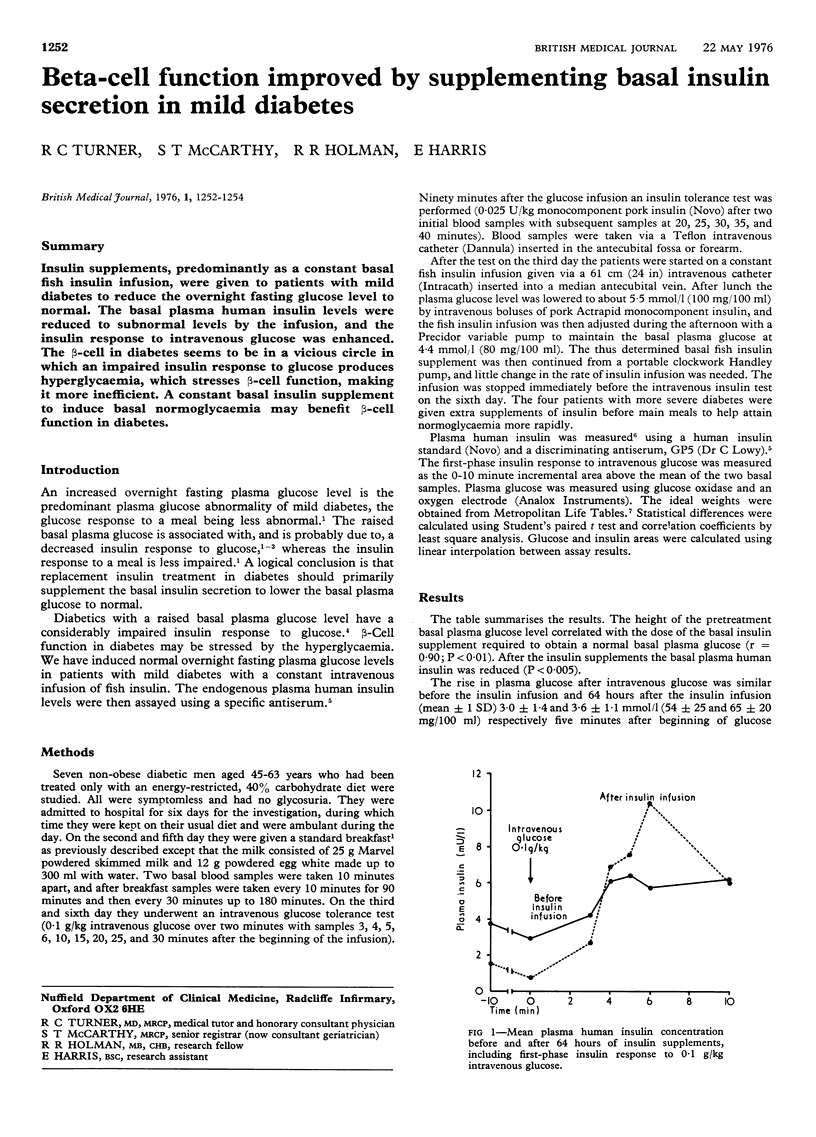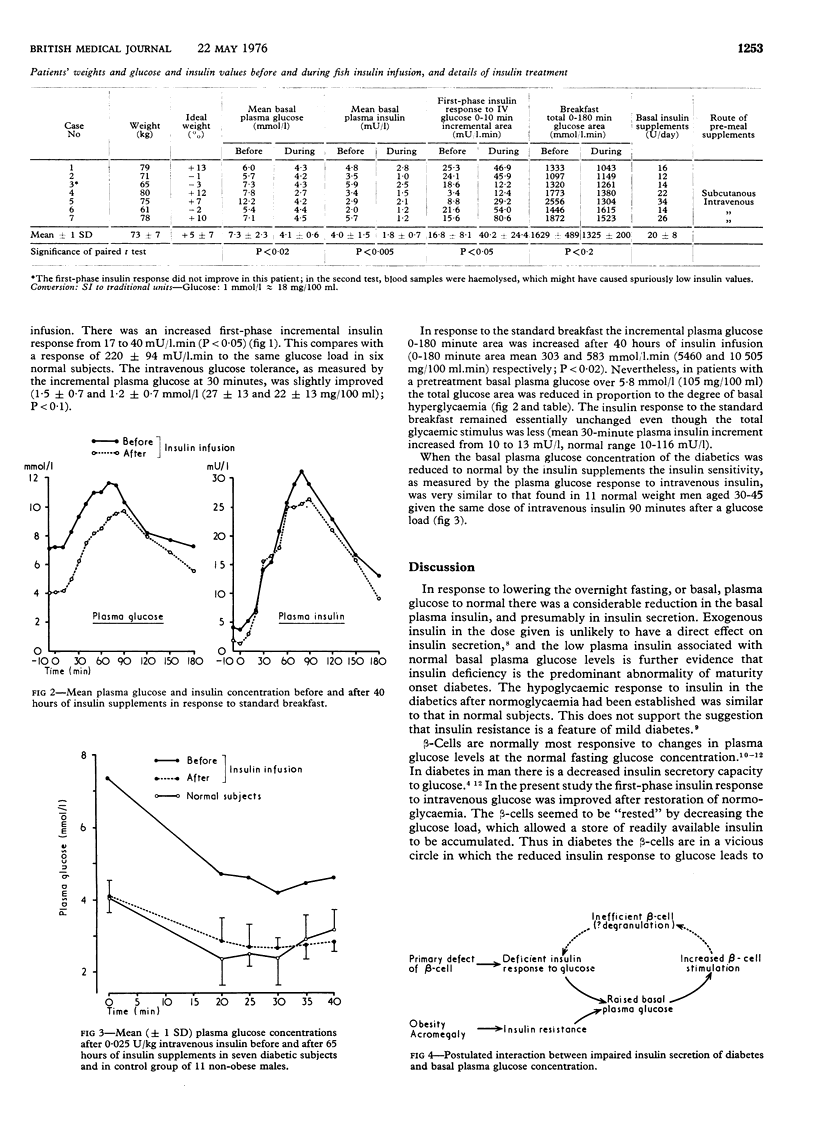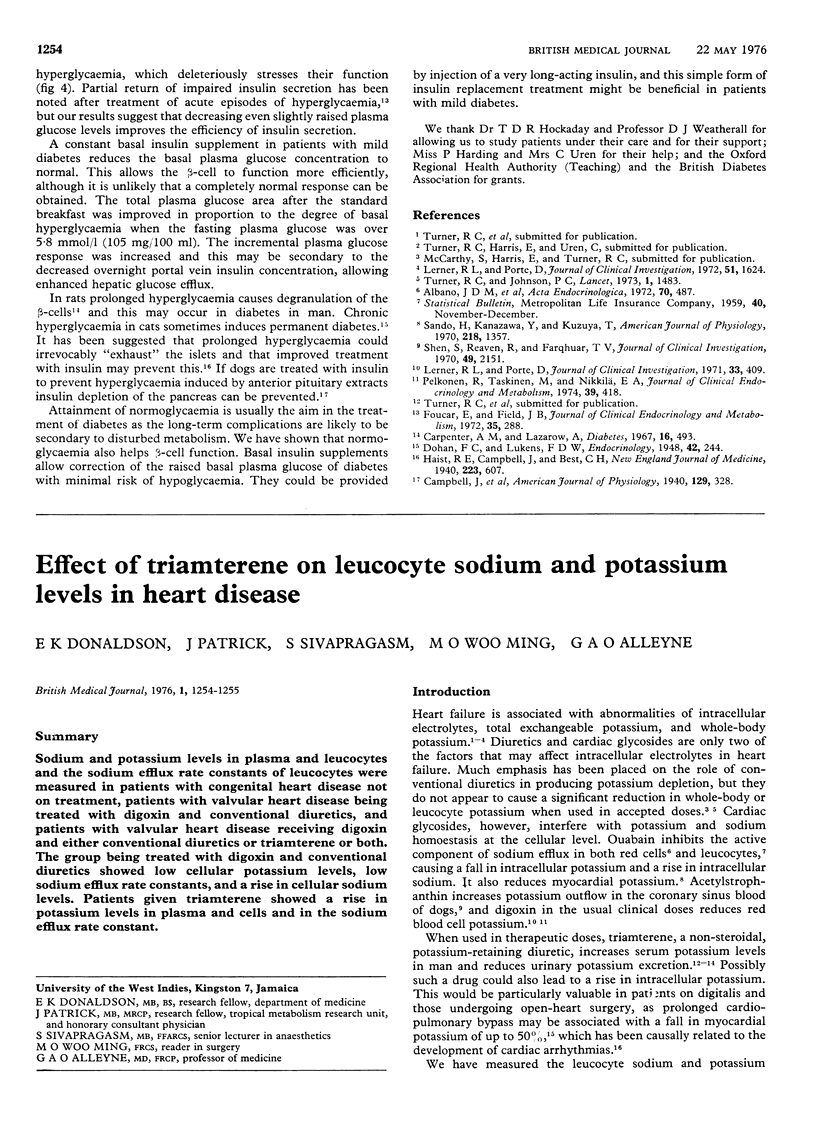Abstract
Insulin supplements, predominantly as a constant basal fish insulin infusion, were given to patients with mild diabetes to reduce the overnight fasting glucose level to normal. The basal plasma human insulin levels were reduced to subnormal levels by the infusion, and the insulin response to intravenous glucose was enhanced. The beta-cell in diabetes seems to be in a vicious circle in which an impaired insulin response to glucose produces hyperglycaemia, which stresses beta-cell function, making it more inefficient. A constant basal insulin supplement to induce basal normoglycaemia may benefit beta-cell function in diabetes.
Full text
PDF


Selected References
These references are in PubMed. This may not be the complete list of references from this article.
- Albano J. D., Ekins R. P., Maritz G., Turner R. C. A sensitive, precise radioimmunoassay of serum insulin relying on charcoal separation of bound and free hormone moieties. Acta Endocrinol (Copenh) 1972 Jul;70(3):487–509. doi: 10.1530/acta.0.0700487. [DOI] [PubMed] [Google Scholar]
- Carpenter A. M., Lazarow A. Effects of hyper- and hypoglycemia on beta cell degranulation and glycogen infiltration in normal, subdiabetic and diabetic rats. Diabetes. 1967 Jul;16(7):493–501. doi: 10.2337/diab.16.7.493. [DOI] [PubMed] [Google Scholar]
- Foucar E., Field J. B. Effect of control of hyperglycemia on plasma insulin responses to various stimuli in newly diagnosed ketosis-prone diabetic patients. J Clin Endocrinol Metab. 1972 Aug;35(2):288–298. doi: 10.1210/jcem-35-2-288. [DOI] [PubMed] [Google Scholar]
- Lerner R. L., Porte D., Jr Acute and steady-state insulin responses to glucose in nonobese diabetic subjects. J Clin Invest. 1972 Jul;51(7):1624–1631. doi: 10.1172/JCI106963. [DOI] [PMC free article] [PubMed] [Google Scholar]
- Lerner R. L., Porte D., Jr Relationship between intravenous glucose loads, insulin responses and glucose disappearance rate. J Clin Endocrinol Metab. 1971 Sep;33(3):409–417. doi: 10.1210/jcem-33-3-409. [DOI] [PubMed] [Google Scholar]
- Pelkonen R., Taskinen M. R., Nikkilä E. A. Early response of plasma insulin to small doses of intravenous glucose: effect of obesity. J Clin Endocrinol Metab. 1974 Sep;39(3):418–424. doi: 10.1210/jcem-39-3-418. [DOI] [PubMed] [Google Scholar]
- Sando H., Kanazawa Y., Kuzuya T. Effect of bonito insulin on endogenous insulin secretion in dogs. Am J Physiol. 1970 May;218(5):1357–1362. doi: 10.1152/ajplegacy.1970.218.5.1357. [DOI] [PubMed] [Google Scholar]
- Shen S. W., Reaven G. M., Farquhar J. W. Comparison of impedance to insulin-mediated glucose uptake in normal subjects and in subjects with latent diabetes. J Clin Invest. 1970 Dec;49(12):2151–2160. doi: 10.1172/JCI106433. [DOI] [PMC free article] [PubMed] [Google Scholar]
- Turner R. C., Johnson P. C. Suppression of insulin release by fish-insulin-induced hypoglycaemia: with reference to the diagnosis of insulinomas. Lancet. 1973 Jun 30;1(7818):1483–1485. doi: 10.1016/s0140-6736(73)91817-5. [DOI] [PubMed] [Google Scholar]


